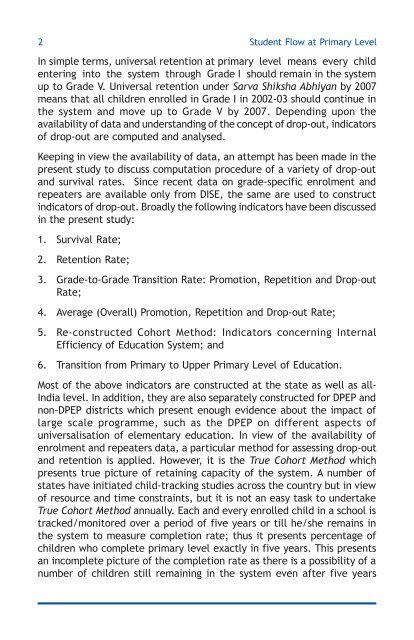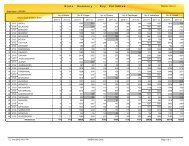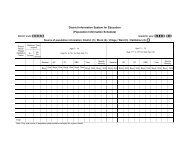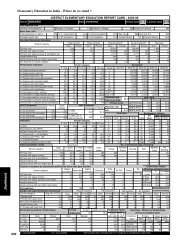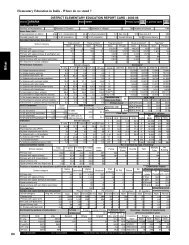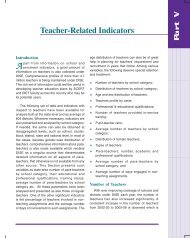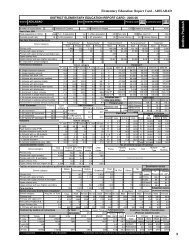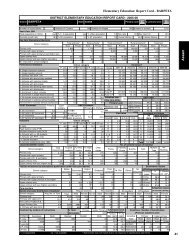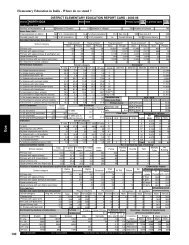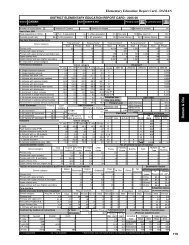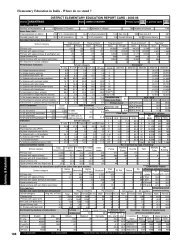Student Flow at Primary Level - DISE
Student Flow at Primary Level - DISE
Student Flow at Primary Level - DISE
- No tags were found...
Create successful ePaper yourself
Turn your PDF publications into a flip-book with our unique Google optimized e-Paper software.
2 <strong>Student</strong> <strong>Flow</strong> <strong>at</strong> <strong>Primary</strong> <strong>Level</strong>In simple terms, universal retention <strong>at</strong> primary level means every childentering into the system through Grade I should remain in the systemup to Grade V. Universal retention under Sarva Shiksha Abhiyan by 2007means th<strong>at</strong> all children enrolled in Grade I in 2002-03 should continue inthe system and move up to Grade V by 2007. Depending upon theavailability of d<strong>at</strong>a and understanding of the concept of drop-out, indic<strong>at</strong>orsof drop-out are computed and analysed.Keeping in view the availability of d<strong>at</strong>a, an <strong>at</strong>tempt has been made in thepresent study to discuss comput<strong>at</strong>ion procedure of a variety of drop-outand survival r<strong>at</strong>es. Since recent d<strong>at</strong>a on grade-specific enrolment andrepe<strong>at</strong>ers are available only from <strong>DISE</strong>, the same are used to constructindic<strong>at</strong>ors of drop-out. Broadly the following indic<strong>at</strong>ors have been discussedin the present study:1. Survival R<strong>at</strong>e;2. Retention R<strong>at</strong>e;3. Grade-to-Grade Transition R<strong>at</strong>e: Promotion, Repetition and Drop-outR<strong>at</strong>e;4. Average (Overall) Promotion, Repetition and Drop-out R<strong>at</strong>e;5. Re-constructed Cohort Method: Indic<strong>at</strong>ors concerning InternalEfficiency of Educ<strong>at</strong>ion System; and6. Transition from <strong>Primary</strong> to Upper <strong>Primary</strong> <strong>Level</strong> of Educ<strong>at</strong>ion.Most of the above indic<strong>at</strong>ors are constructed <strong>at</strong> the st<strong>at</strong>e as well as all-India level. In addition, they are also separ<strong>at</strong>ely constructed for DPEP andnon-DPEP districts which present enough evidence about the impact oflarge scale programme, such as the DPEP on different aspects ofuniversalis<strong>at</strong>ion of elementary educ<strong>at</strong>ion. In view of the availability ofenrolment and repe<strong>at</strong>ers d<strong>at</strong>a, a particular method for assessing drop-outand retention is applied. However, it is the True Cohort Method whichpresents true picture of retaining capacity of the system. A number ofst<strong>at</strong>es have initi<strong>at</strong>ed child-tracking studies across the country but in viewof resource and time constraints, but it is not an easy task to undertakeTrue Cohort Method annually. Each and every enrolled child in a school istracked/monitored over a period of five years or till he/she remains inthe system to measure completion r<strong>at</strong>e; thus it presents percentage ofchildren who complete primary level exactly in five years. This presentsan incomplete picture of the completion r<strong>at</strong>e as there is a possibility of anumber of children still remaining in the system even after five years


